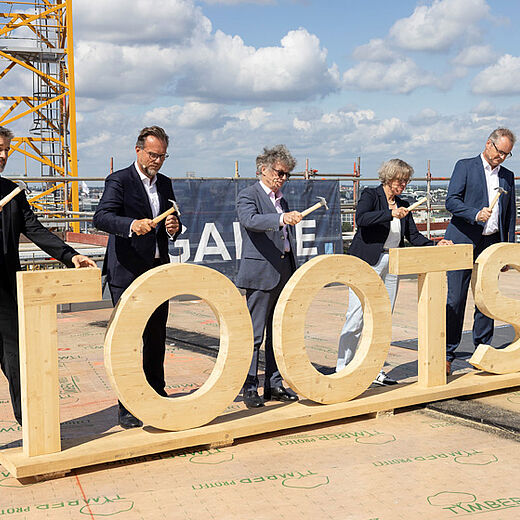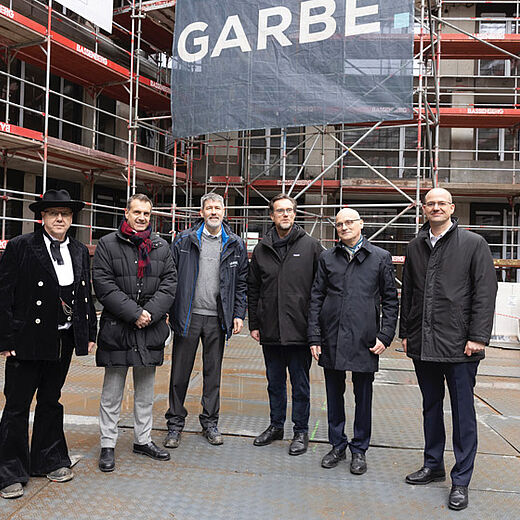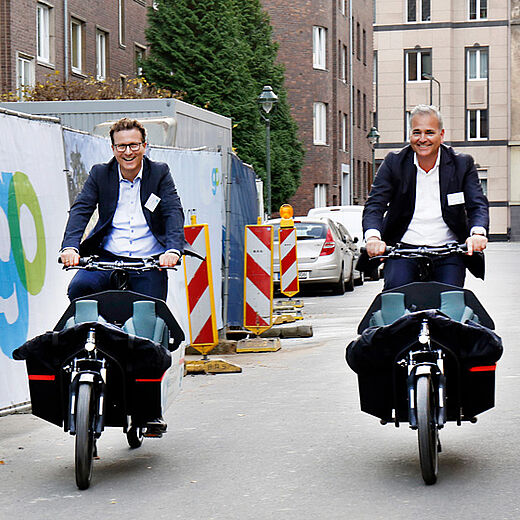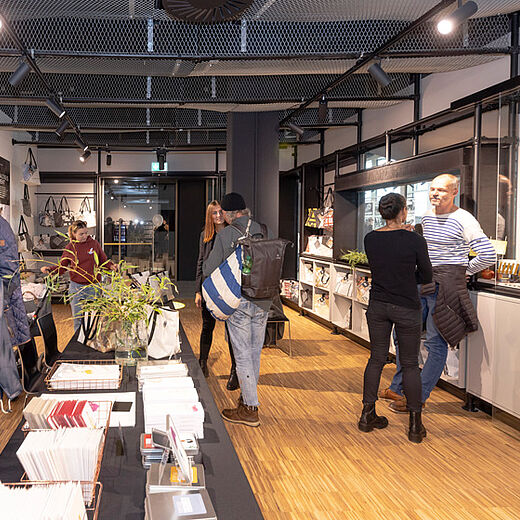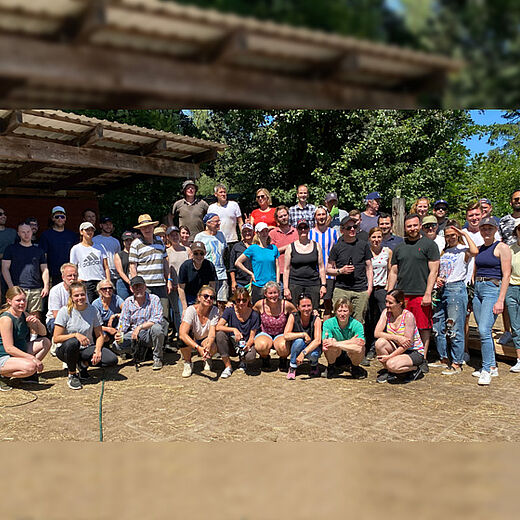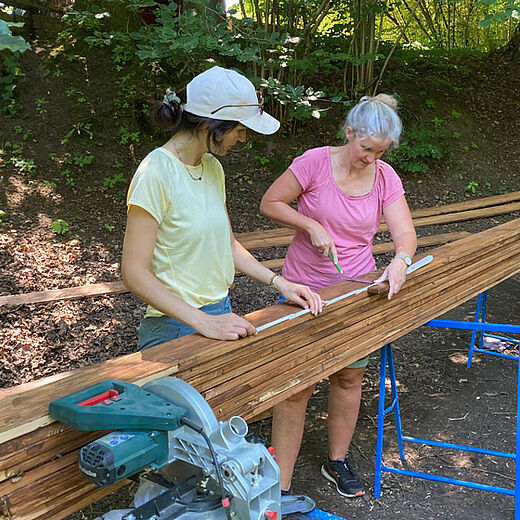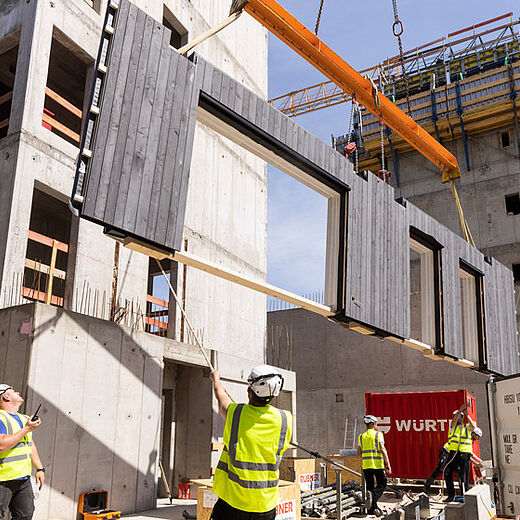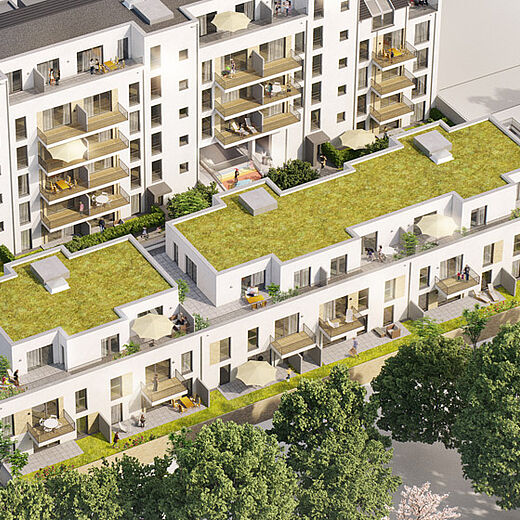"With the laying of the foundation stone of the "Roots", we are celebrating a significant milestone on the path of our forward-looking mission of climate-neutral redensification of our cities. Together with strong partners, we are moving forward and showing how we can design buildings to be more resilient as well as more durable, and how we can construct them in a way that conserves resources. Here, too, we are sticking to our premise: sustainability is not a trend for us, but an attitude," explains Fabian von Köppen, Managing Director of Garbe Immobilien-Projekte GmbH.
The 19-storey wooden high-rise "Roots" will in future be part of the entrée for the Elbbrückenquartier and will use around 5,500 m³ of softwood for the construction, plus facades, windows and coverings. Garbe Immobilien-Projekte is thus setting new standards in sustainable project development: "We are proud to announce that the concept is attracting interest from both owner-occupiers and capital investors. Already, around 80 percent of the flats have been allocated. This underlines the need and the relevance of such project developments on the part of a broad target group that attaches great importance to sustainable living," adds Fabian von Köppen, Managing Director of Garbe Immobilien-Projekte GmbH.
Symbolically, the project developer buried a time capsule in the nine-metre-deep excavation pit with Hamburg's First Mayor Dr. Peter Tschentscher, Dr. Jörg Soehring, Chairman of the German Wildlife Foundation, and Jan Störmer of the architectural firm Störmer Murphy and Partners.
Hamburg's First Mayor, Dr Peter Tschentscher: "HafenCity meets the highest standards of sustainable urban development - with attractive housing, modern workplaces and low-emission mobility. With the 'Roots' project, Germany's largest wooden high-rise and one of the most modern and sustainable residential and office buildings is being built in the Elbbrücken quarter. As the future headquarters of the German Wildlife Foundation, 'Roots' stands for a special closeness to nature. In the Elbbrücken Quarter, Hamburg shows how sustainability and climate protection can be implemented in urban development in a concrete way."
A bridge to nature
Wooden façade, surrounding loggias, open spaces in the 2- to 5-room flats and views of the harbour, the city centre and the Elbe canals: the sustainable use of resources and the architectural design of the "Roots" respond to the growing trend towards a sustainable lifestyle.
Timber construction is also possible in Germany on this scale, as we can see here today. I am pleased that with this project, innovation has finally been allowed in Hamburg - the ROOTS thus paves the way for future timber projects. I am convinced that this wonderful, renewable building material will play a much stronger role in urban building construction in the future," says Jan Störmer, partner at Störmer Murphy and Partners.
The approximately 15,000 m² of residential use will be supplemented by 430 m² of restaurant space and various types of parking spaces. An underground car park with almost 100 parking spaces including charging infrastructure for electric mobility and 23 stationary car-sharing spaces as well as over 500 bicycle parking spaces are part of the concept. A 600m² green inner courtyard and a yoga room with terrace for the future residents underline the closeness to nature. The Deutsche Wildtier Stiftung (German Wildlife Foundation) will move into 1,700m² of office space and integrate an interactive exhibition on more than 2,000m², which will provide insights into the topics of nature and species conservation. In addition, a learning workshop will be built here to enable nature education with all the senses, as well as Germany's first nature film cinema. In future, the cinema will not only show thematic films, but also organise the first European Wildlife Film Contest, which will attract international filmmakers.
"What is a foundation that cares about nature and wildlife doing here in the still young district of Hafencity, in the middle of a new building district made of concrete and steel, and in future also of wood? My answer is quite clear: this is exactly where we belong! Because in addition to protecting wild animals and their habitats, the German Wildlife Foundation is very concerned to counteract the alienation from nature and to inspire people for nature. Because people can only protect what they know," explains Dr Soehring, Chairman of the German Wildlife Foundation.
![[Translate to English:] Foto von links nach rechts: Fabian von Köppen (Garbe Immobilien-Projekte), Dr. Jörg Soehring (Deutsche Wildtier Stiftung), Dr. Peter Tschentscher (Erster Bürgermeister Hamburg) Bildrechte: Daniel-Sumesgutner](/fileadmin/user_upload/magazin/Garbe_Roots_Grundsteinlegung_c_Daniel-Sumesgutner_klein.jpg)
